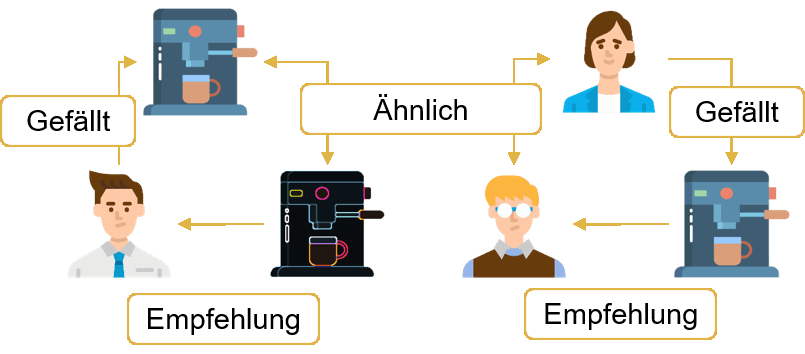AI Recommender Systems
Recommender systems are widespread and can be found on every major platform on the Internet. The purpose of such a system is always to link a person with possible objects of experience. The decision or selection of an alternative is only made from a subset of all possibilities. People are relieved.
In the industry, there are a large number of decisions with great freedom. Whether it’s about product development by engineers or the current advertising strategy, it doesn’t matter.
The current status
There are two types of recommender systems. In content-based systems, similar content is selected from a basic set. In collaborative systems, the information on what to recommend is generated by the user. Depending on the data situation and the use case, a customized recommendation system can be created on the basis of data.
The transparency of recommendations is sometimes difficult to establish. In application, however, the uncertainties that such a system has in the selection of proposals are balanced out by the specialist who has the decision-making power.
Technology and use
Technology description
The following illustration shows the fundamental differences in the design of recommendation services. On the left-hand side, the similarity between two or more products is calculated and similar products are suggested to the user. On the right-hand side, the similarity between two or more users (e.g. based on purchasing behavior or similar product ratings and interests) is calculated and products are suggested that have been consumed by similar users.
In the technical implementation, the mathematical distance between data points (products or people) is calculated. The smaller the distance, the higher the similarity. Products are described mathematically, for example through metadata (keywords) or parameters, people through their purchasing behavior or product ratings.

Possible application scenarios
Possible application scenarios are available wherever decisions have to be made. The decisions are supported by recommender systems.
For example, patterns can be recognized when filling out delivery/order forms. Suggestions in the relevant fields can greatly reduce the time otherwise needed to complete the form.
Modularization is widespread in mechanical engineering. The patterns that are present in the configuration of a project can be learned by recommender systems. In this case, too, companies and employees benefit from the help of artificial intelligence in the form of time savings, among other things.
Opportunities for SMEs
Contact us
Keep an eye on the most important SME-relevant technologies with our technology radar!
